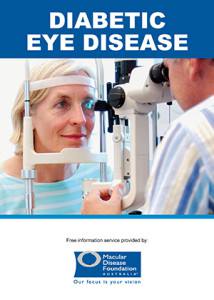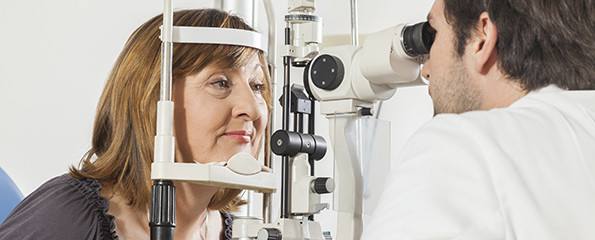The Blinding Reality of Diabetic Retinopathy
It’s a little known fact: People living with diabetes are at significant risk of going blind – even if they have their diabetes under control and have been given the ‘all clear’ in the past by their optometrist.
That’s the new message being communicated by Paul Mitchell, Professor of Ophthalmology at the University of Sydney and an internationally respected expert on diabetic eye disease.
Professor Mitchell said everyone living with diabetes (over 1.1 million Australians) is at risk of losing their sight.
“Diabetic retinopathy is a common complication of diabetes and the leading cause of blindness among working age adults in Australia,” said Professor Mitchell.
He said many people with diabetes have their eyes tested by an eye health professional once, maybe twice and get the all clear. “Psychologically they move into ‘safe mode’ – they don’t think they are at risk of diabetic retinopathy any more. But in fact, their eyes are in ‘unsafe mode’ because for every year a person has diabetes, the greater their risk of developing this blinding eye disease.”
Professor Mitchell said “almost everyone with type 1 diabetes will develop some form of diabetic eye disease within 20 years of diagnosis. Of particular concern however is that many people with the more common type 2 diabetes will have already had the disease for many years by the time they are diagnosed. A large proportion of these people will develop potentially blinding diabetic retinopathy within 5 to 10 years of their diabetes diagnosis. Since everyone with diabetes is at risk of retinopathy, it is essential to have regular eye tests – initially every two years or more often if recommended by their eye health professional,” Professor Mitchell stressed.
Blindness Can Be Prevented
Julie Heraghty, CEO of Macular Disease Foundation Australia, said almost all cases of sight-threatening diabetic eye disease can be avoided. “Careful management of diabetes risk factors (especially blood glucose, weight, blood pressure, lipids and cessation of smoking), as well as a healthy diet and lifestyle; supported by regular eye examinations and specific treatment when required are essential to preventing vision loss from diabetic eye disease,” she said.
Don’t wait for symptoms
Diabetic eye disease can progress to advanced stages without any effects on vision and so it can easily go unnoticed. Detecting early evidence of diabetic retinopathy with regular eye tests is essential. Some people need treatment which is highly effective if delivered early.
Once symptoms develop, vision loss can occur rapidly and can be permanent.“If any changes in vision occur such as dark areas, blurred, distorted, dim or double vision or difficulty seeing at night, people should make an appointment with an eye specialist immediately, through a GP or optometrist referral” said Julie.
For a free information publication on diabetic eye disease contact the Macular Disease Foundation Australia on 1800 111 709 or visit www.mdfoundation.com.au.
Eye Test Check List
- If you have diabetes, visit an ophthalmologist or optometrist at least every two years for a comprehensive dilated eye exam
- For people with existing diabetic retinopathy, a test is needed at least every 12 months, even if vision appears to be perfect
- People with serious diabetic retinopathy or at high risk will need even more frequent eye tests
- Be guided by the optometrist or ophthalmologist and do not cancel or delay appointments
- Never ignore any changes in vision
Impact of Diabetic Retinopathy
- Depression, loss of confidence and anger as well as strains on social, work and family commitments are just some of the impacts of advanced diabetic eye disease. According to one study, just one in three people with vision disorders in the 40 to 65 year age group were employed – less than half the rate for those in the same age group in the general population.
- While the majority of diabetes diagnoses are in people over 45, there are about 56,000 people aged 34 or less diagnosed with diabetes. Many of these will have type 1 (early onset) diabetes.
- Prevalence (especially for type 2) then starts to rapidly increase so that there are about 73,000 people aged between 35 and 44 who have been diagnosed. About 44% of cases of diabetes are in women.
- It is believed that at least as many people are undiagnosed, and that a similar number again will have pre-diabetes.
 | Read the Macular Disease Foundation Australia’s Diabetic Eye Disease brochure. |
(Source: Macular Disease Foundation Australia)
Dates
Tags
Created by:

 Login
Login














